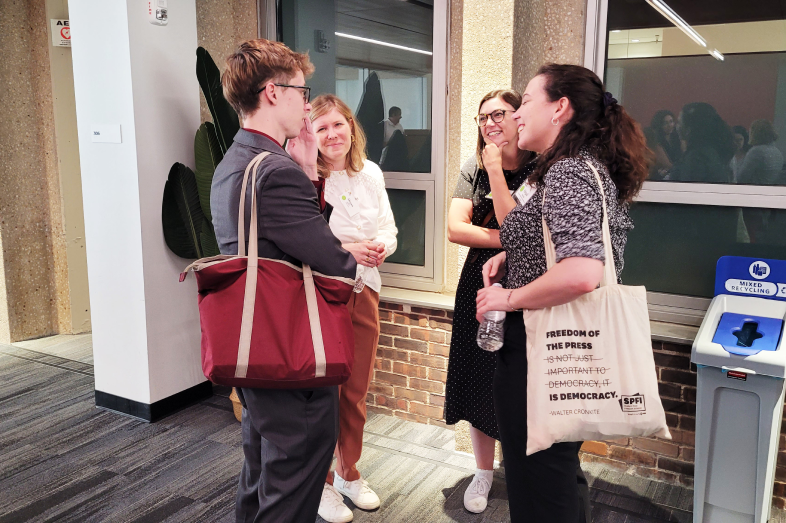
Understanding Changes to Free Speech on Campus
As tensions boil over at U.S. colleges, campus leaders and professors agree that finding space for dialogue is key in creating a constructive college culture.
Photo credit: Judy O’Babatunde

As tensions boil over at U.S. colleges, campus leaders and professors agree that finding space for dialogue is key in creating a constructive college culture.
Photo credit: Judy O’Babatunde
For higher education reporters everywhere, one defining story of last year was the campus protests over Israel’s war in Gaza. While headlines often focused on breakdowns in communication between students, professors and administrators, three panelists at the Education Writers Association’s fall 2024 Higher Education Seminar at the University of Pennsylvania came together to discuss how we can and should create space for productive dialogue.
Moderated by Open Campus’s Kayleigh Skinner, the panelists were:
Though campus protest has a long history in American college life, the 2023-24 school year marked a dramatic shift in how students protested and how reporters covered such events. After students erected encampments on their university campuses to protest the war in Gaza, some university administrators allowed the protests to continue in the name of free speech. Others came down hard, sending in law enforcement to break up the groups and arrest protesters.
Initially, the panelists said, campus free speech concerns centered around professors:
With the crackdown on campus protests this past year, the question of free speech has shifted to students:.
“What we are hearing from students, more significantly, is that they worry about each other more than they worry about their professors’ responses,” Ben-Porath said.
The problem, Ruotolo said, is that students are “wanting this space for dialogue, but they don’t know where to find it.”
Ruotolo works for BridgeUSA, a multi-partisan student movement that works to create constructive discourse and drive a “solution-oriented political culture.” The organization has 63 college chapters and 17 high school chapters, which host events and discussions in which students can productively and responsibly talk about important issues.
While student groups like BridgeUSA are doing important work, Ruotolo emphasized that “it’s a responsibility of universities to cultivate this dialogue” as well.
Soudi said it’s part of his job to “engage everyone to create an inclusive classroom.”
As a teacher and a linguist, Soudi explained that while he must facilitate free expression in his class, he also understands his responsibility to promote empathy. He strives to set an example for students of how to speak freely while leading with compassion.
“People have a hard time collaborating across differences, even grown-ups, not just students, because we don’t teach it,” he said.
Soudi praised the University of Pittsburgh’s “Year of Discourse and Dialogue” – an initiative by the university to foster meaningful conversation and harness the power of the campus’s diverse members. Pitt funded numerous projects through the “Year of Discourse and Dialogue,” including creative writing workshops, discussions on the role of pharmacies in harm reduction, and a “Week and Day of Racial Healing,” among other programs.
Like any education-related story, the panelists said, there’s a lot reporters get right, and wrong, about covering campus speech. While it’s important to pin down movement leaders and key players, it’s also important to step beyond the most immediate narrative and seek out unheard voices.
Soudi encouraged reporters to spend time on college campuses to truly understand them:
By doing so, he said, reporters will be able to paint a full picture, rather than just boil complicated dynamics down to overused tropes.
“If you just get out of your car and talk to the next person you see, they may not be the best person who actually knows what’s going on,” he said.
Ruotolo said it’s important to consider more than just the “vocal minorities on either side.” When there’s a large campus protest, he said, reporters should not just talk to the protesters and counter-protesters, but to talk to, for example, students whose classes may have been disrupted or graduations canceled.
“Talk to the politically apathetic student,” Ruotolo said.
Your post will be on the website shortly.
We will get back to you shortly